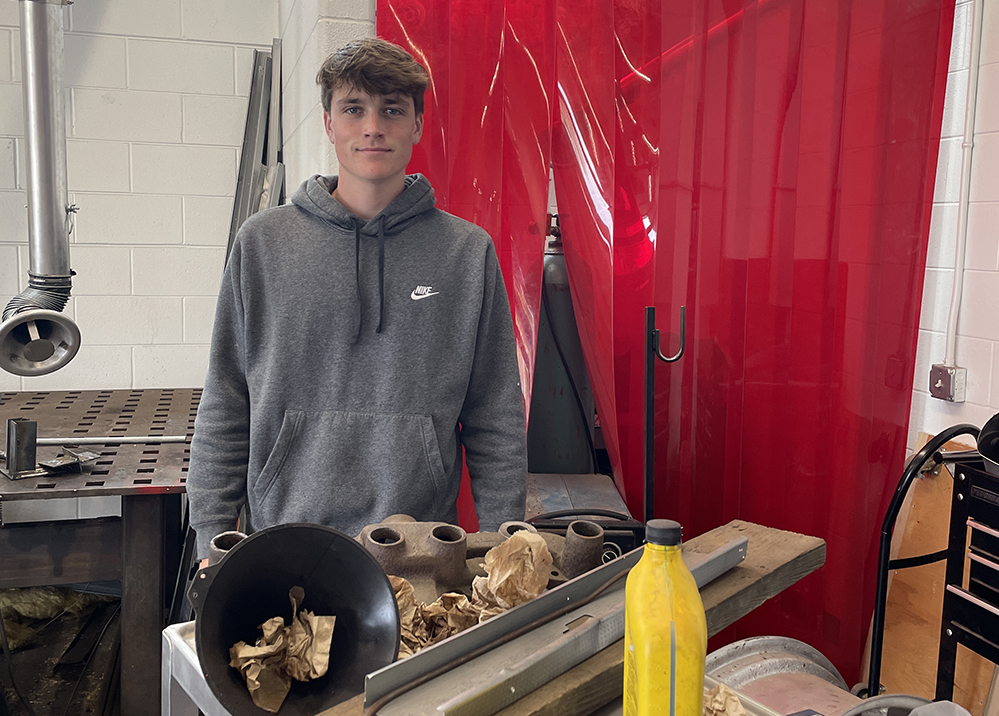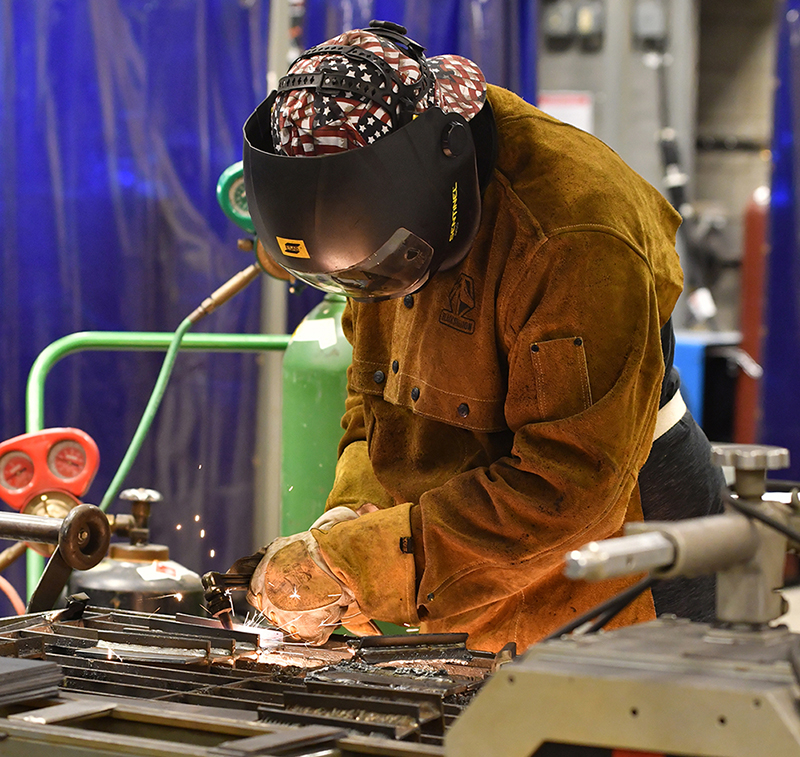‘Academic Career Plans’ Have Students Exploring Careers as Early as Kindergarten
States are requiring the plans to get students thinking about future jobs sooner — and save them from college debt
By David Tobenkin | August 27, 2022In June, Connor Opdahl graduated high school in a remote, rural area of Wisconsin with the familiar gray clouds facing seniors nationwide: a looming possible recession, political and racial tensions and a rebound of COVID-19.
But Opdahl has a plan.
While he graduated with a 4.12 GPA, he balks at the cost of a four-year college he views as unnecessary to his career objectives and a likely source of massive debt. He’s also a highly athletic, outdoors kind of guy who does not fancy being chained to a desk.
So this month he starts a nine month technical training program at Blackhawk Technical College to become a utility power lineworker.
The cost: a mere $7,000.
But more importantly, he’ll join a stable profession that pays more than $50,000 per year for new entrants and $78,000 for seasoned professionals with five-years experience.

Opdahl’s confidence in no small part reflects the four years of career development work he put in through his academic career plan.
The plans, which go by many other names, refer to both personalized career and academic development activities as well as the eportfolio created as each learner advances through school and transitions into the workforce, according to a report released by Advance CTE, a national association of state career technical education educators and administrators.
Opdahl’s journey
Since 2017, every student in grades six through 12 in Wisconsin has been required to participate in an academic career plan. Opdahl started as an eighth grader and continued throughout his four years at Milton High School.
During that time, he’s participated in job fairs and field trips to learn about trades and completed a youth apprenticeship at a golf course. A union representative on the links suggested he consider a career as an electrical lineman. In his sophomore year, Opdahl wrote an essay evaluating three career options, including one as a power lineworker. He then conducted research and designed a postsecondary plan during his junior year. His school’s Xello career technology platform linked him to information about electrical power-line installers and repairers, including a job description, labor market projections and salary.
As a senior, he gave a presentation to three adults on the value of his chosen profession. But just in case, he also recently began a plumbing apprenticeship program in the event his dream of being a lineworker runs into unexpected headwinds. Plumbing, he notes, is another high-income, rock steady career choice.
“The process helped me a lot, especially the essay, because I got to tour Blackhawk and that helped me know what classes I needed to line up in college,” Opdahl said. “I took dual credit classes in senior year so that those would qualify and I wouldn’t have to take them at Blackhawk, which saves time and money. ”
The rise of academic career plans
Figuring out what to do in life and how to get there is not easy for anyone. For teenagers, confronting raging hormones in addition to mastering academics, it can be especially challenging. Increasingly, high schools, middle schools and even elementary schools are turning to academic career plans to help students start thinking about their future paths earlier and more effectively.

Scott Solberg, vice president of research for the Coalition for Career Development Center and a professor at Boston University, said the plans help young people see “the purpose and meaning of what they’re learning” by discovering it on their own.
“When youth realize and become aware of the trajectories they are creating, everything changes,” he said. “When academic career plans are done well — and that is not always the case — youth are transformed.”
Career conversations are a core component. A 2017 Organization for Economic Co-operation and Development study found that future wage earnings at age 26 increase 0.8% for each meaningful career conversation students experience in middle and high school, with the increased earnings rising to 1.6% for each conversation rated “very useful.”
“Implementation of [academic career plans] in Denver Public Schools has led to increased attendance, GPAs, test scores, and graduation rates, and decreases in dropout and behavior challenges,” said Samantha Haviland, the district’s executive director of career development and student supports. “So it’s had a real, real positive impact on a lot of things students have a hard time with.”
Academic career plans are not new. At least 38 states have implemented them, including 21 that require the plans, according to the Advance CTE report. In 2020-21, for example, Colorado made academic career plan participation mandatory for graduation, a step adopted by Oklahoma in 2019-20.
Starting in kindergarten
Academic career plans are also starting earlier.
Michele Walker, a teacher at Arkansas Elementary School in Aurora, Colorado, has developed a detailed academic career plan curriculum that begins in kindergarten.
Second graders, for example, read an illustrated account of “The Tortoise and the Hare,” raising issues of self-management, persistence and goal setting, not to mention empathy and respect for others.
With younger students, part of the purpose is linking student aspirations to potential careers, said Michele Corey, a second grade teacher at the school. “At the beginning of the year, we really talked to the kids about what their interests were,” Corey said. “One girl was like, ‘My dad has cancer and I want to know how to get rid of germs.’ And so I was telling her, ‘Well, if you want to learn about viruses, you could be a virologist.’ And she’s like, ‘That’s what I want to be.’”
In some cases, academic career plans are linked to socioeconomic goals for an entire region. In northeastern Colorado, for example, plans are tied to hopes that more high school students will stay put in small towns that are losing graduates to large metropolitan areas with more opportunities.
“I think we want to keep our people in northeast Colorado — we feel it’s a great place to be,” said Mike Bowers, superintendent of Lone Star School District, a school system with a robust program that monitors the career readiness progress of its 128 students. While activities help students explore all their options, including those that might take them away from home, his school goes the extra mile to keep them in Colorado.
The substance of the plans varies by school.
Some feature competency training in which students receive credit for skills such as time management, personal finance, and professional demeanor. Since 2020-21, all students in fifth through 12th grades at Lone Star have been required to participate in “Adulting 101” — designed to emphasize practical skills from filling out tax forms to fixing a car.
Beyond high school
And increasingly, the plans follow students beyond high school graduation.
Iowa took a major step in this direction in August 2021 when it deployed 21 College and Career Transition Counselors across the state. Community colleges formed partnerships with local high schools where they provided counselors to help high school students bridge the gap to college, said Pete Drury, college and career transition counselor at Marshalltown Community College.
That enabled Drury to help Donavan Happe, a recent graduate from East Marshall High School who had already completed a welding certificate and plans to pursue an advanced manufacturing degree at the college.
Drury served as Happe’s professional school counselor at East Marshall in grades four through eight. In 8th grade, Drury taught a class where students explored future careers.

It was a decisive experience, Happe said: “I had been thinking I was going to be an engineer, but when I saw how much math was involved, I began to look at other options. A career in welding and manufacturing, which will also allow me to be my own boss, began to appeal to me.”
“That’s one of the things that career projects in eighth grade can accomplish,” Drury added. “I’ve had lots of kids that begin to dig into a career that they are interested in and realize that it is not the right fit for them: They didn’t realize how many years of school it involved or what level of math, science or reading they need to master. I’d much rather be able to have those conversations early instead of after they graduate.”
Still, achieving career readiness success is also a measure of student grit. Mercedes Calderon just graduated from high school and plans to attend Muscatine Community College in Iowa in the fall to begin prerequisites to become a nurse. When COVID shut down normal career shadowing activities at her high school, she took the initiative and reached out to an aunt who is a nurse to help her explore the field.
Calderon proceeded to participate in a senior year Healthcare Academy in which she split her year between high school and community college. She completed educational requirements to achieve a certificate as a nursing assistant, with all tuition paid for by the high school.
Calderon said COVID-19 profoundly affected her planned career choice.
“I chose nursing because I want something that’s always going to be there. There’s always going to be sick people, and there’s always going to be people that need help,” she said. “And it pays decently.”
Get stories like these delivered straight to your inbox. Sign up for The 74 Newsletter
